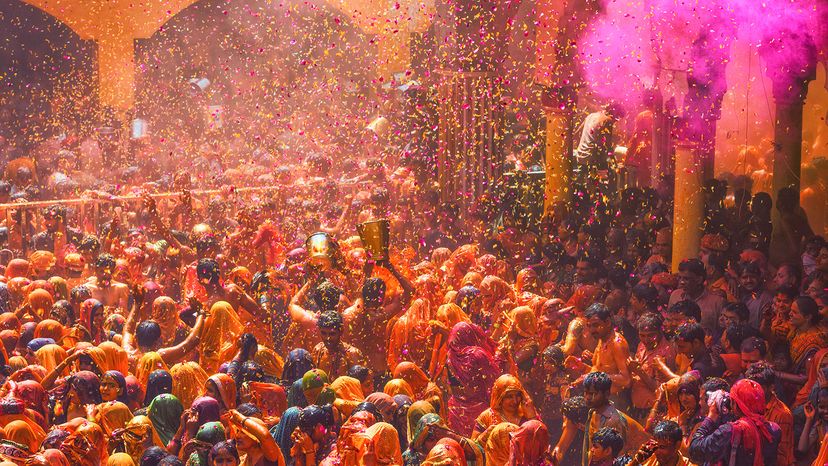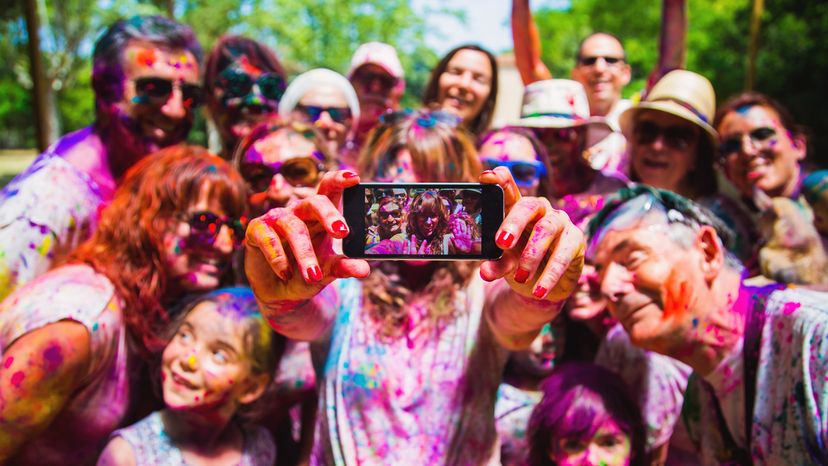Holi originated in ancient India with deep religious significance tied to the mythology of Lord Vishnu — who appeared as a half lion to destroy evil — and the Hindu figure Prahlad, who was miraculously saved from fire while his evil aunt Holika burned.
This event is remembered during the night before Holi, when people light bonfires to symbolize the burning of evil.
Another Holi legend involves the demoness Putana, who attempted to kill the infant Krishna by breastfeeding him poisoned milk. Baby Krishna miraculously survived and vanquished Putana.
A Colorful Start
Yet another central story involves Lord Krishna, a Hindu deity whose blue skin and playful nature inspired the tradition of throwing colors.
According to legend, the Hindu god Krishna played Holi with the gopis (cowherd women, many of whom were married) of Vrindavan in northern India, playfully splashing them with colored powder and water.
Romantic Beginnings
Holi is also associated with the divine love between Krishna and Radha, though Krishna was already in love with Radha before the festival.
In the legend, Krishna worried that Radha might dislike his blue skin, so on his mother’s advice he smeared color on Radha’s face — upon which Radha fell in love with Krishna.


